Best Office Chair For Tailbone Pain and Enhance Comfort
Transform your home office into a productivity powerhouse with these comfort-boosting ideas. Upgrade your chair for better posture.
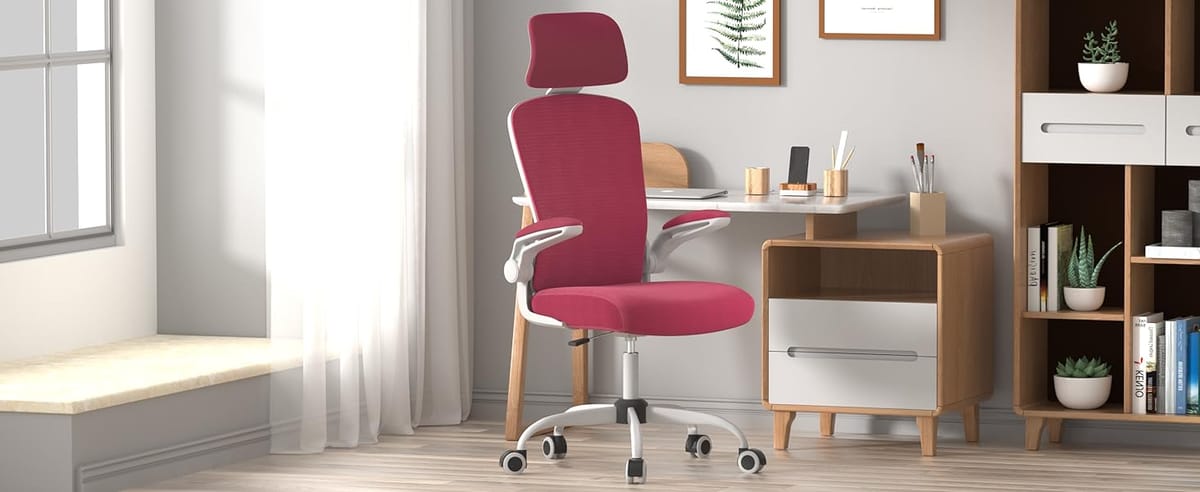
Suffer from back or tailbone pain while sitting in your office?
An easy way to deal with poor posture or back pain is to have an ergonomic office chair that relieves pressure on your spine, especially on the tailbone sitting.
Finding the perfect office chair can be difficult. We have done research to find out the chairs based on your needs. We have covered a few options based on various criteria including body type and budget for budget-conscious people you might consider a lumbar support pillow for an office chair.
Buying Guide
Our selection criteria include height, lumbar support, material, and comfort on the natural curvature of your spine. We looked for seats with a waterfall edge, thick high-density foam or memory foam, adjustable depth controls, and synchro-tilt to ensure proper posture at any position.
A seat height of three to five inches is adjustable in recommended on all seats. Sitting too high off the floor can cause your feet to dangle and create uncomfortable pressure points on your hips, legs, and back.
Other most important factors to consider
- Seat Design - The most significant variable when considering tailbone pain is a comfortable seat design. Sitting for prolonged stretches is critical to avoid pain and discomfort, your tailbone or coccyx should not be pressed down on too hard. Look for seats with plush cushioning to help prevent this. Additionally, if you have other problems while sitting, you can investigate our list of the finest chairs for scoliosis and hips.
- Chair Height - It is recommended to use a backrest that may be adjusted independently from the seat and consider your height relative to the range of seat height adjustments and the backrest. A premium option will cost more than an average office chair, but your back will be grateful. For taller people consider chairs with larger seat height ranges.
- Lumbar Support - Lumbar support is important for your spine to maintain its natural curve. Most office chairs come with a pre-installed lumbar support insert, but you can find more premium ones that include different lumbar support settings for your specific needs.
- Additional Features - a footrest can be a nice add-on for sitting for long periods. Another option is reclining office chairs with adjustable armrests, or tilt-lock features if you prefer a comfortable position.
- Material - There are several materials available for office chairs, including leather, faux leather, fabric, and mesh. Mesh fabric may be an option for breathable. You can still get excellent office chairs that alleviate tailbone pain in executive styles or other upholstery choices.
Might consider a seat cushion for an office chair as an alternative instead of replacing the expansive office chair.
Mimoglad Adjustable Lumbar Support & Headrest Office Chair
Shop Now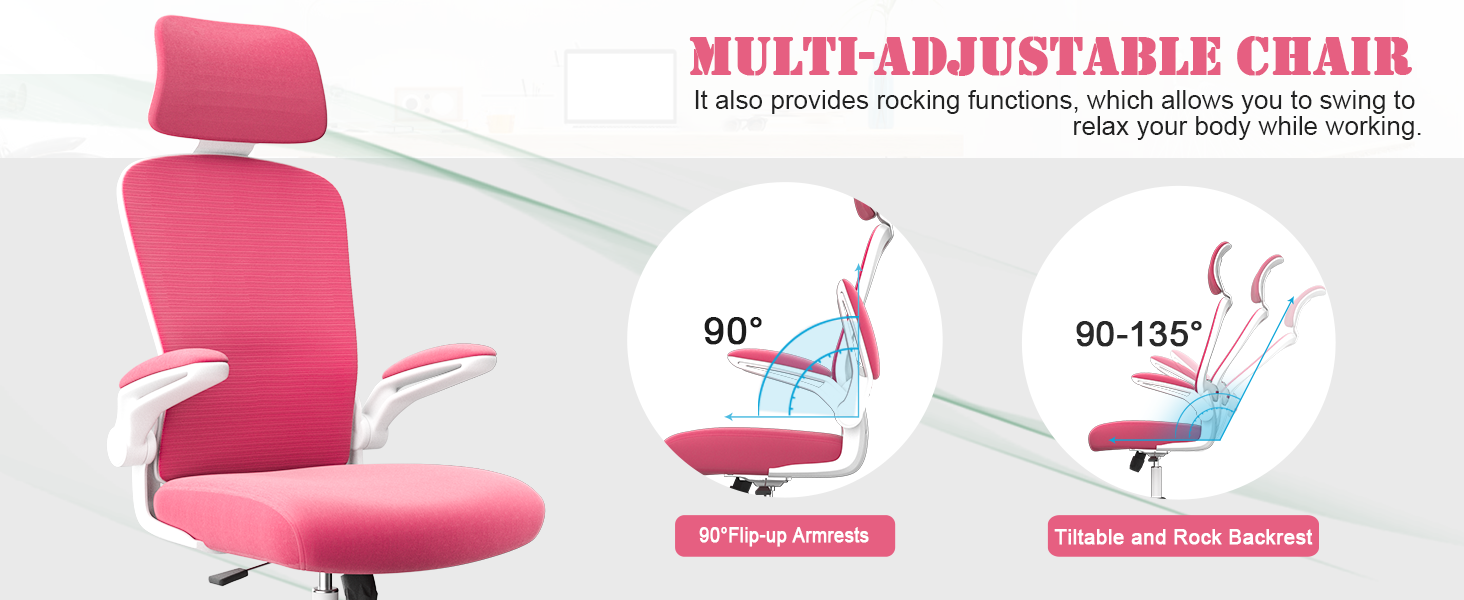
Mimoglad Adjustable Lumbar Support & Headrest Office Chair
- Material: Metal, Fabric & Plastic
- Item Weight: 31 Pounds
- Dimensions: 16.53"D x 19.68"W x 50.78"H
- Base: Wheels
An ergonomic chair with proper support maintains a healthy spine posture and will not have a damaging and flattening effect on your back. Good lumbar support will minimize strain or pain on the lumbar discs in your spine. The adjustable headrest prevents you from hunching forward or scrunching your shoulders. Don't be slouching, this is the culprit.
Worth considering:
Ticova Ergonomic Office Chair
Shop Now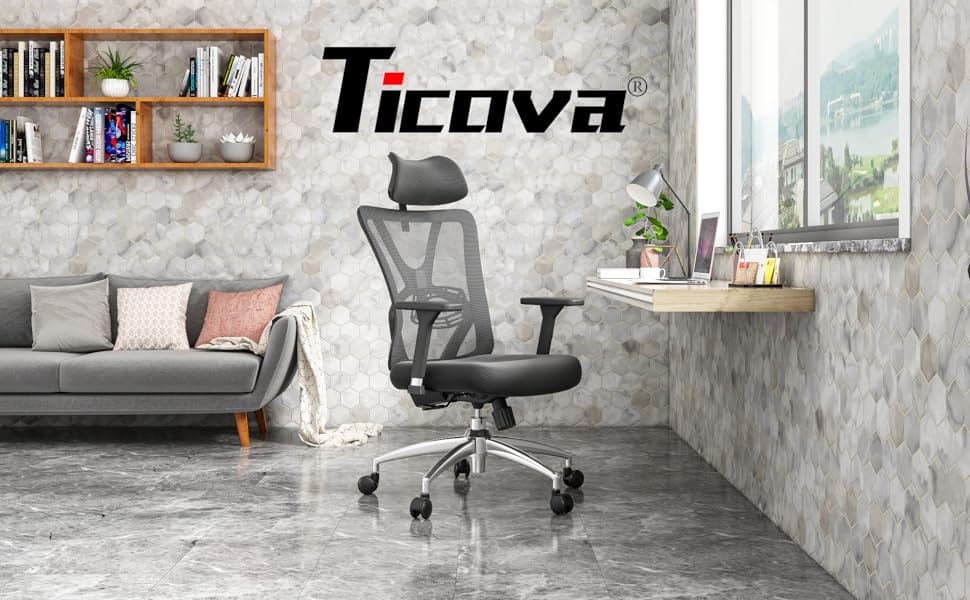
Ticova Ergonomic Office Chair
- Material: Nylon, Polypropylene, Plastic, Metal
- Item Weight: 40 Pounds
- Dimensions: 27"D x 9.8"W x 20.9"H
- Gel Enhanced: No
- Non-Slip Base: Yes
You can adjust lumbar support height and depth; headrest height and angle; armrest height, angle, forward & backward; seat cushion height; tilting angle up to 130°and rocking resilience to your personal most comfortable position.
Worth considering:
- Comfilux Gel Seat Cushion from comfilux
- Cushion Lab Pressure Relief Seat Cushion
Steelcase Leap Fabric Office Chair For Tailbone
Shop Now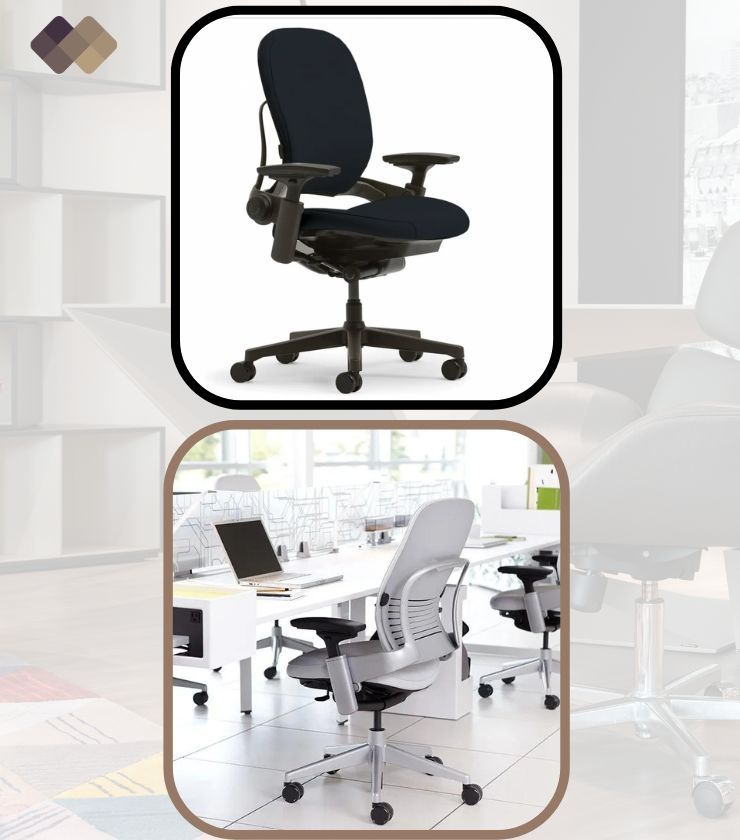
Steelcase Leap Fabric Office Chair For Tailbone
- Material: Foam
- Item Weight: 0.72 Pounds
- Dimensions: 12.76 x 5.43 x 5.35 inches
- Gel Enhanced: No
- Non-Slip Base: Yes
Adjustable in every way, Leap is the chair of choice for people who seek optimal, personalized support. The contoured backrest features LiveBack(TM) technology that changes shape as you move to support your entire spine in its natural, healthy S-shape.
Height-adjustable lumbar and lower back firmness control lets you set your preferred level of support for your lumbar spine. The patented Natural Glide(TM) adjustment allows the seat to glide forward so you can recline without leaving your optimal zone for seeing and reaching your work.
GTRACING Gaming Chair with Footrest
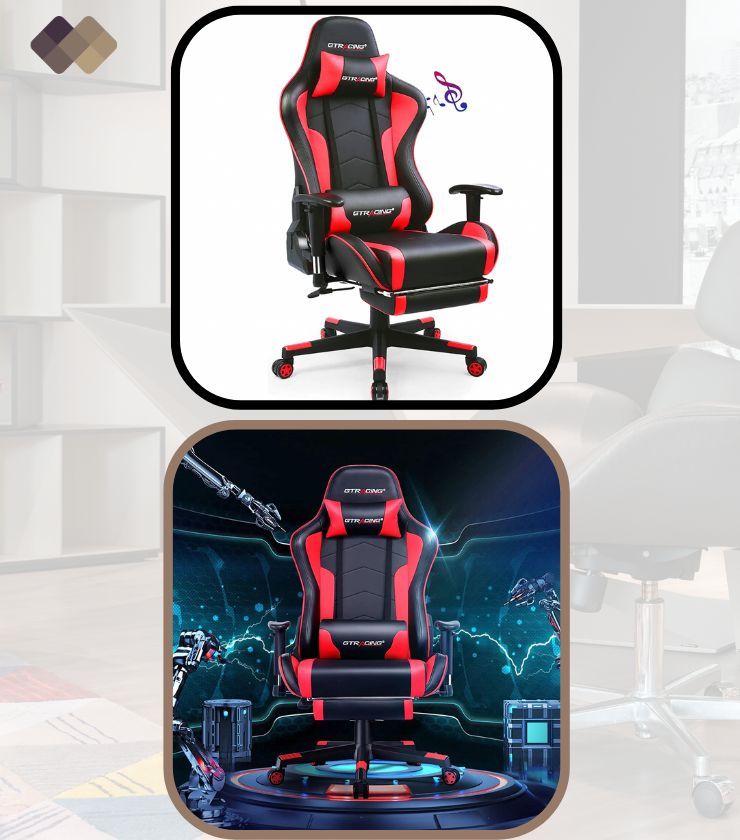
GTRACING Gaming Chair with Footrest
- Material: Faux Leather
- Item Weight: 51.9 pounds
- Dimensions: 21.65"D x 21.65"W x 50"H
- Max. Weight Recommendation: 350 pounds
- Non-Slip Base: Yes
It's not just about looks, the GT Racing gaming chair is built for comfort, with reinforced seat cushions, lumbar support, with a removable headrest. The heavy-duty base and nylon smooth-rolling casters give the chair extra strength and stability. So whether you're spending hours in the game or just relaxing with friends, you'll be doing it in style and comfort with the GT Racing Gaming Chair.
NOUHAUS Ergo3D Ergonomic Office Chair
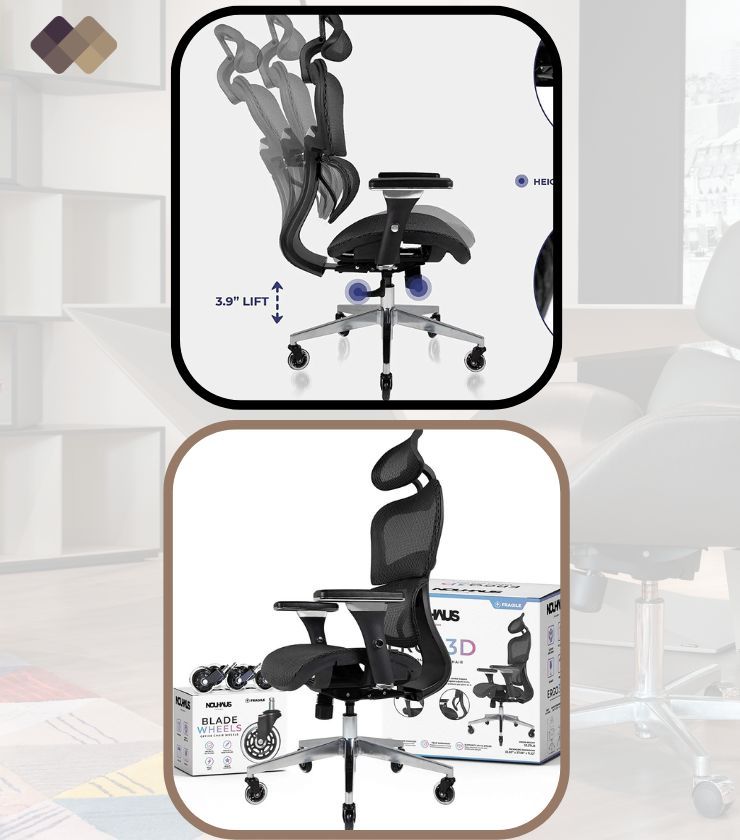
NOUHAUS Ergo3D Ergonomic Office Chair
- Material: Iron, Wood
- Item Weight: 46.29 Pounds
- Dimensions: 3.86"D x 27.56"W x 11.22"H
- Gel Enhanced: No
- Non-Slip Base: Yes
With its 4D adjustable armrest and lumbar system, elastomers, 135 Degree Back Tilt, Smooth HydraLift, and dual castors. Easy to think the Ergo3D is from the future, but instead, it’s evolved Ergo Seating at its finest and it’s here now.
The mesh headrest adjusts up and down while the 4D Adjust Arms go forwards, back, up, down, side to side, and rotate for the best fit for your body. 3D Lumbar Support hugs your back, while the seat glides up and down for the ultimate in customized comfort in the office.
Best Office Chair For Tailbone Pain FAQs
It can be hard to know which Office Chair For Tailbone Pain is best for you based on your preferences and features. With all the different brands, options, and varieties on the market, it can be hard to figure out which one is right for you. Here are the most frequently asked questions.
Q: What type of chair should you sit in with tailbone pain?
Answer: If you’re dealing with tailbone pain, also known as coccydynia, choosing the right chair can make a significant difference in your comfort and recovery. Here are some key features to look for in a chair to help alleviate tailbone pain:
- Cushioned Seat with Cut-Out Design: Chairs with a U-shaped cut-out or a coccyx cushion are ideal. This design relieves pressure on the tailbone by suspending it over the cut-out area, preventing direct contact with the seat and reducing pain.
- Ergonomic Support: Look for chairs that offer good ergonomic support, particularly for your lower back. An adjustable lumbar support feature helps maintain the natural curve of your spine, reducing strain on the tailbone.
- Adjustable Height and Tilt: Being able to adjust the height and tilt of your chair ensures that you can find a comfortable sitting position. Your feet should be flat on the ground, and your hips should be slightly higher than your knees to maintain proper alignment.
- Firm, Not Hard, Cushioning: While a soft cushion might seem like a good idea, too much softness can actually increase pressure on your tailbone. A chair with firm yet comfortable cushioning provides better support and distributes your weight more evenly.
- Reclining Feature: A reclining chair or one with a slight backward tilt can help reduce pressure on your tailbone by allowing you to shift your weight backward, taking the load off your lower spine.
- Swivel and Mobility: If you need to move around frequently, consider a chair with a swivel base and smooth-rolling casters. This reduces the need to twist your torso, which can exacerbate tailbone pain.
For those dealing with tailbone pain, investing in a chair that combines these features can greatly enhance your comfort during prolonged sitting. Additionally, consider using a separate coccyx cushion with your current chair if purchasing a new one isn’t an option. Always remember to take frequent breaks to stand up and move around, which can also help relieve tailbone discomfort.
Q: How do you relieve tailbone pain in an office chair?
Answer: If your chair does not provide support, use a tailbone pain relief pillow under your tailbone, check here our recommendations. If you need to lean forward, use a small cushion or stack of books under your backside.
A tailbone protector or a seat cushion of an office chair is recommended. If you do not want to use a tailbone protector, consider sitting on a soft knee pillow while sitting in an office chair.
Q: Are kneeling chairs good for coccyx pain?
Answer: Yes, kneeling chairs can be beneficial for coccyx (tailbone) pain, but their effectiveness depends on the severity of your condition and how the chair is used.
Kneeling chairs are designed to promote a more upright posture by shifting your weight forward, which can reduce pressure on the lower back and tailbone. Since you’re not sitting directly on your coccyx, a kneeling chair can help alleviate pain in that area. This makes them a good option for people who experience discomfort from sitting in traditional chairs for long periods.
However, it’s important to note that kneeling chairs are not a one-size-fits-all solution. They can be helpful, but they may not eliminate coccyx pain, especially if the pain is severe or due to a specific injury. It's also crucial to use the chair correctly—ensuring that your weight is distributed between your knees and buttocks and that your back is properly supported.
For best results, consider using a kneeling chair in combination with other ergonomic furniture or accessories, like a coccyx cushion, to further reduce pressure on the tailbone. Additionally, taking regular breaks to stand, stretch, and move around can help manage and prevent coccyx pain. If the pain persists, it's advisable to consult a healthcare professional for personalized advice
